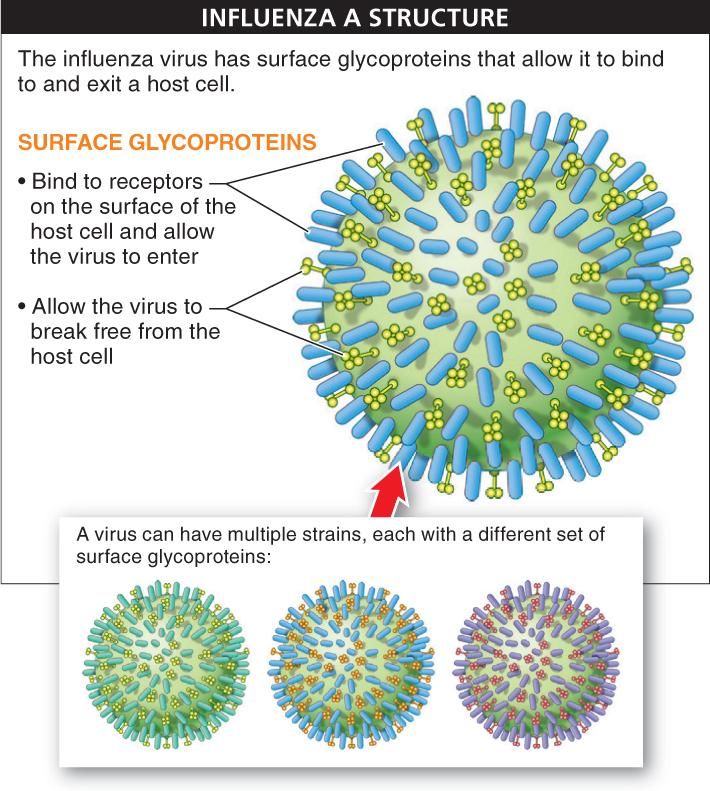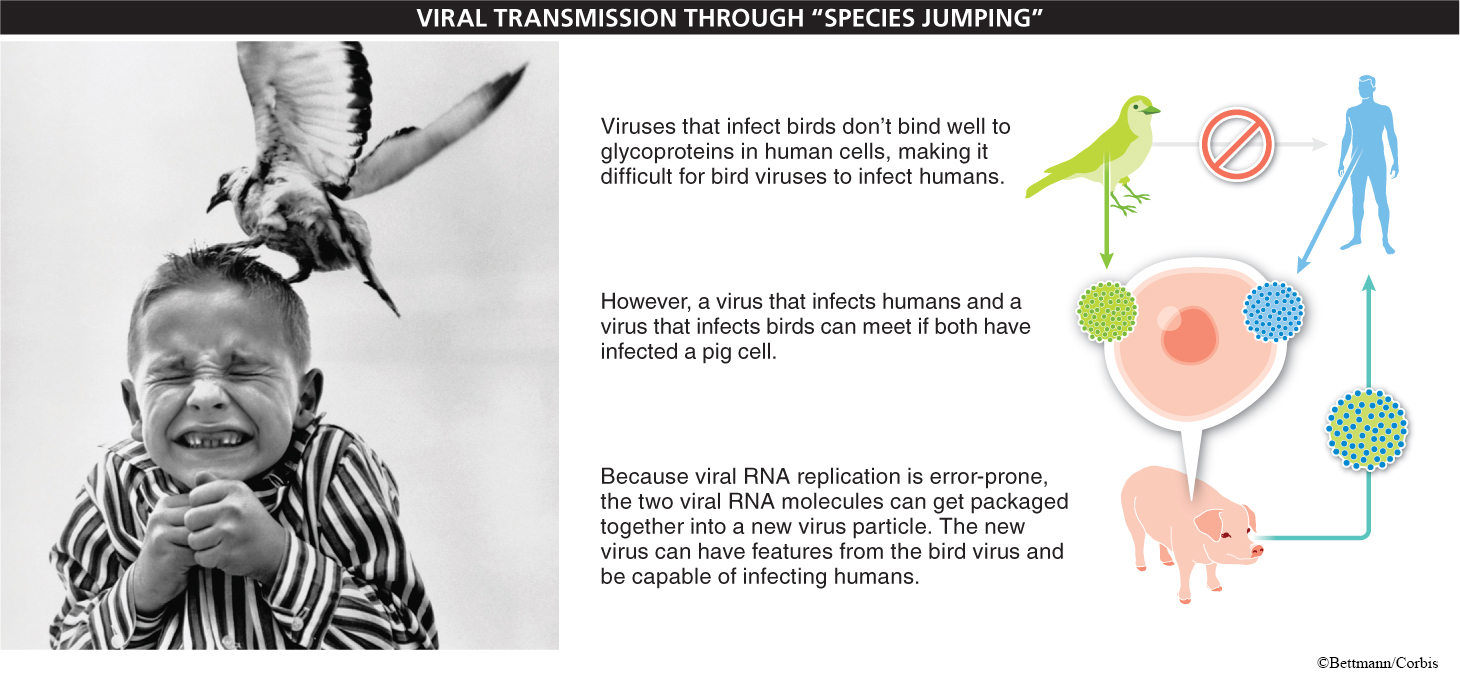Viruses are nearly everywhere. There are viruses that infect animals, viruses that infect plants, even viruses that infect bacteria. Most viruses infect just one species, or only a few closely related species, and enter only one kind of cell in that species. But some viruses can infect a wide range of hosts—
The glycoproteins on the surface of a virus determine which host species the virus can infect and which tissues of the host it can enter. Influenza A viruses (the ones that cause flu outbreaks every year), for example, have two types of glycoprotein that have different functions. One glycoprotein matches that of a host cell, and allows the virus to enter the cell. The other glycoprotein allows the virus to get back out of the cell, releasing new virus particles that can infect other cells (FIGURE 13-27).

Influenza A is an example of a virus that can move from one species to another, and as we noted above, all of the influenza pandemics in the past century began with the transmission of a bird flu virus to humans. Here’s how “species jumping” can occur.
What role does a pig play in the transmission of virus from a bird to a human?
Viruses that infect birds don’t bind well to glycoproteins in human cells, making it difficult for bird flu viruses to infect humans. However, the cells of pigs have glycoproteins that allow both human and bird flu viruses to bind to them. Thus, a pig cell can be infected by a human flu virus and a bird flu virus at the same time. But influenza viruses are not very careful when they incorporate newly synthesized RNA into new particles. If RNA strands from a human flu virus and a bird flu virus happen to be in a pig cell at the same time, some virus particles released from the cell might include RNA from both the bird and the human virus. These influenza viruses are a new strain, and they may be able to infect humans (FIGURE 13-28).

561
Since 1997, one strain of bird flu has spread from Hong Kong through most of Asia and into Turkey, France, Germany, and England. This is the most recent avian influenza virus that can also infect humans (not needing pigs as intermediary). The virus readily infects birds, and tens of millions of chickens, turkeys, and ducks have been killed in attempts to eradicate the infection. Because the virus’s host-
TAKE-HOME MESSAGE 13.18
Glycoproteins on the surfaces of viruses determine the types of cells a virus can invade. Most viruses infect just one species, or only a few closely related species, and enter only one kind of cell in that species.
How does genetic material from the “bird flu” get from birds into humans?
The strains of influenza that infect birds do not efficiently infect humans; however they can readily infect pigs. Human influenza viruses also can readily infect pigs. When a pig cell is simultaneously infected by both a bird strain and a human strain of influenza, their genetic material can be mixed to form a new strain that may be able to infect humans.